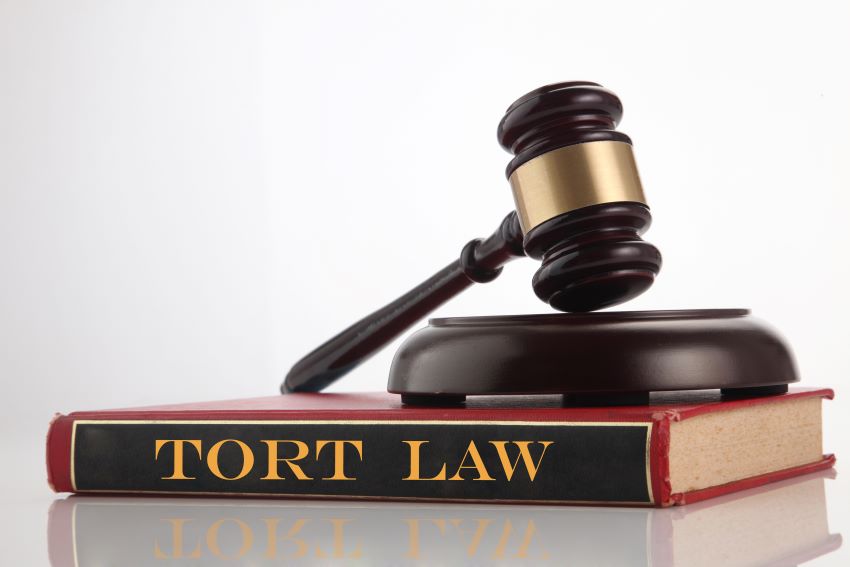Tort law is a system of law that deals with civil wrongs. These are wrongs that are not criminal, but rather, they are injuries that one person causes to another person. Tort law allows the injured person to sue the person who caused the injury to recover monetary damages. In Utah, several specific tort laws can affect you and your business. In this blog post, we will discuss some of Utah’s most important tort laws and what they mean for you!
1. Negligence: Negligence is a tort law that applies when someone fails to behave with the appropriate level of care, resulting in injury or harm to another person. In Utah, a person can be found negligent if they act in a way that falls below the standard of care a reasonable person would have worked with under similar circumstances. Negligence is determined on a case-by-case basis, and courts will consider the duty of care owed by one party to another, the breach of that duty, whether damages were suffered as a result of such breach, and whether there is legal causation between the parties. To prove negligence, plaintiffs must demonstrate (1) the defendant’s duty; (2) breach of duty; (3) proximate cause; and (4) resulting damage or injury. Duty is an obligation imposed by the law requiring someone to conform to a certain standard of conduct to protect another against unreasonable risks of harm. A breach is a failure to act under the duty owed. Proximate cause refers to a situation where one party’s action or inaction caused an injury to another and any intervening causes that may have contributed to the injury. Finally, damages refer to losses suffered by an injured person due to someone else’s negligence. In Utah, there are four main categories of damages: economic damages, non-economic damages, punitive damages, and emotional distress damages. Economic damages include compensating for lost wages, medical bills, and other financial losses from injuries sustained due to the defendant’s negligence. Non-economic damages refer to pain and suffering endured by plaintiffs as a result of their injuries. Punitive damages are awarded when the defendant’s conduct is incredibly reckless or malicious. Emotional distress damages might be available if a plaintiff experienced severe emotional trauma due to another person’s negligence, such as fear of serious injury or death. It is important to note that Utah has a statute of limitations for filing a negligent lawsuit, so it is best to consult with an attorney as soon as possible after suffering an injury. An experienced attorney can help you understand and navigate the complex laws regarding negligence in Utah.
Additionally, comparative negligence applies in many cases of negligence in Utah. This means that both parties’ actions will be considered when evaluating who is at fault for injuries suffered by one party. Under this concept, the court can assign a percentage of fault to each party, and the number of damages awarded will be reduced based on that percentage. For example, if one party is found 20% be at fault for an accident, then any damages received from that party would be reduced by 20%. It is important to note that Utah has a modified comparative negligence rule known as the 51% bar rule, which states that when one’s negligence exceeds 50%, they are barred from recovering damages even if the other side was also negligent. Ultimately, understanding negligence laws in Utah can help you protect your rights and seek justice after suffering an injury due to another person’s careless behavior.
2. Strict Liability: Another important tort law in Utah is strict liability. This rule holds people liable for injuries caused by their actions regardless of whether they were careless. In Utah, strict liability laws apply to certain civil proceedings. Strict liability is a legal doctrine in which an individual or organization can be liable for damages regardless of intent or negligence. This means that even if there was no intention to cause harm and no negligent behavior, the defendant could still be found liable for any damage caused by their actions.
For example, in Utah, an individual may be held strictly liable for any damages resulting from releasing a hazardous product into the environment. In this case, the plaintiff does not have to prove intent or negligence on the defendant’s part to receive compensation. All they need to show is that the defendant released a hazardous substance and it caused injury or damage.
Strict liability laws can also be enforced in cases involving animal bites, dog attacks, and defective products. In these situations, a plaintiff does not have to prove negligence on the defendant’s part — all they have to do is show that an action taken by the defendant caused the injury or damage.
3. Intentional Torts: Intentional torts are a tort where the person who caused the injury did so on purpose. Under Utah law, an injured party may seek legal remedies such as monetary damages for losses incurred due to the tortious act. The number of damages awarded will depend on the severity of the harm inflicted by the defendant’s conduct. In some cases, punitive damages may also be available to punish egregious behavior.
The court may also grant injunctive relief in some cases. This relief requires the defendant to cease engaging in a particular behavior or perform a specific action. For example, if a person has been found liable for trespass, the court may issue an injunction prohibiting them from entering the plaintiff’s property again.
Hopefully, this blog post has helped you understand some of Utah’s most important tort laws and what they mean to you. Suppose you have been injured due to another person’s negligence or an intentional act. In that case, you must contact an experienced attorney as soon as possible to protect your rights and pursue any potential claims for monetary damages. Rules and laws change constantly. Reach out to one of our experts to learn the current laws and receive the help you deserve.

